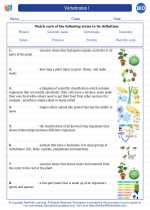ATP (Adenosine Triphosphate)
ATP, or adenosine triphosphate, is a molecule that carries energy within cells. It is often referred to as the "energy currency" of the cell, as it provides the energy necessary for cellular processes.
Structure of ATP
ATP is composed of three main components: a sugar molecule (ribose), a nitrogenous base (adenine), and three phosphate groups. The three phosphate groups are attached to the ribose sugar, and it is the high-energy bonds between these phosphate groups that store the energy.
Function of ATP
ATP serves as the primary energy carrier in cells. When ATP is hydrolyzed (broken down) into ADP (adenosine diphosphate) and inorganic phosphate, energy is released and can be used to drive cellular processes.
ATP in Cellular Processes
ATP is involved in various cellular processes, including:
- Metabolism: ATP provides the energy needed for metabolic reactions, such as the synthesis of macromolecules and the breakdown of nutrients.
- Muscle Contraction: ATP powers muscle contractions by providing the energy required for muscle fibers to contract.
- Active Transport: ATP is used to power the transport of molecules across cell membranes against their concentration gradients.
- Synthesis of Biomolecules: ATP provides the energy necessary for the synthesis of proteins, nucleic acids, and other biomolecules.
Study Guide for ATP
When studying ATP, it is important to focus on the following key points:
- Understand the structure of ATP, including the components and the high-energy bonds.
- Learn about the function of ATP as the primary energy carrier in cells and its role in powering various cellular processes.
- Explore the specific cellular processes that rely on ATP, such as metabolism, muscle contraction, active transport, and biomolecule synthesis.
- Consider the interconversion of ATP and ADP and the role of ATP synthase in the generation of ATP during cellular respiration.
- Relate the importance of ATP to overall cellular function and the significance of energy transfer within living organisms.
By mastering these concepts, you will develop a comprehensive understanding of the role of ATP in cellular energy transfer and its significance in biological systems.
.◂Biology Worksheets and Study Guides High School. Vertebrates I
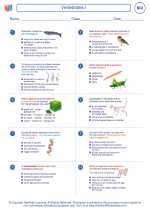
 Worksheet/Answer key
Worksheet/Answer key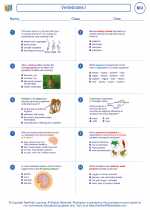
 Worksheet/Answer key
Worksheet/Answer key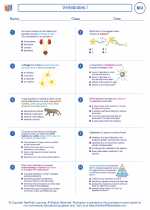
 Vocabulary/Answer key
Vocabulary/Answer key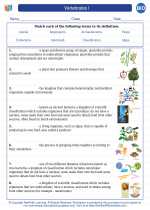
 Vocabulary/Answer key
Vocabulary/Answer key
 Vocabulary/Answer key
Vocabulary/Answer key